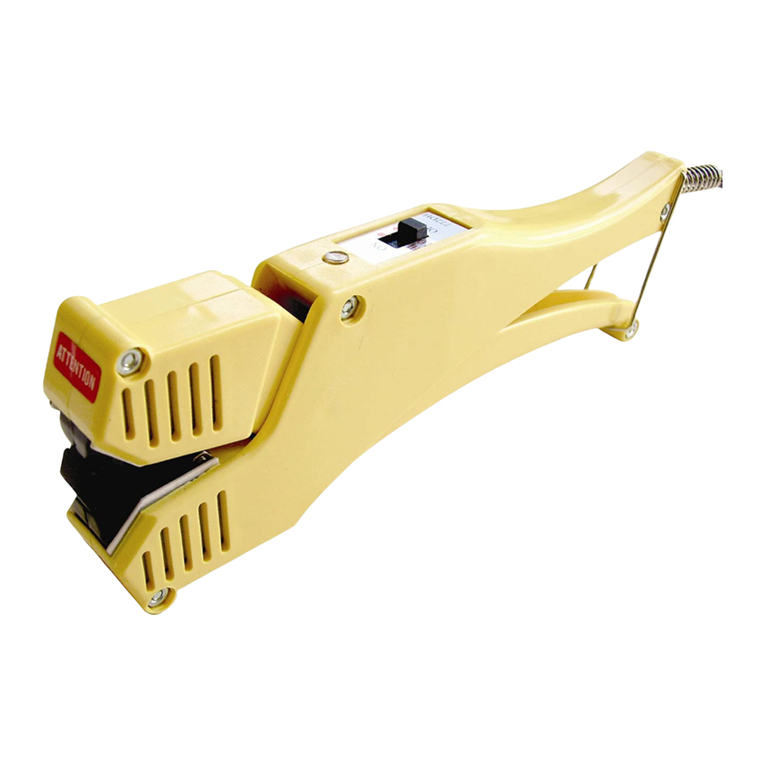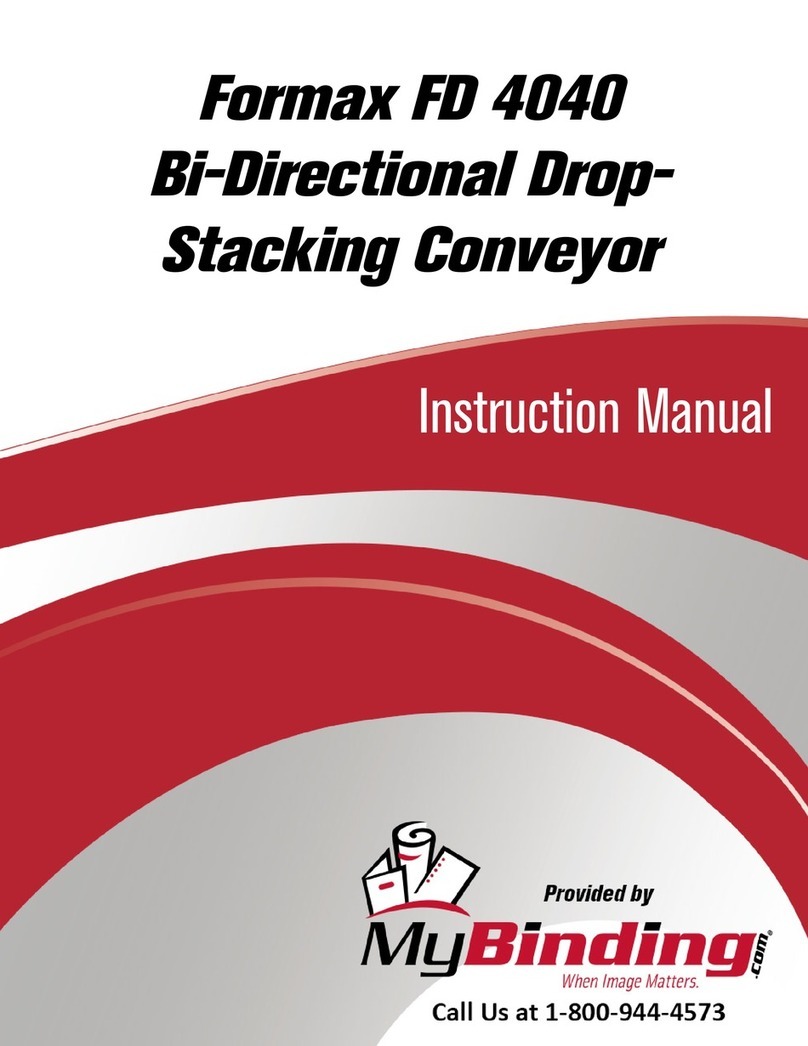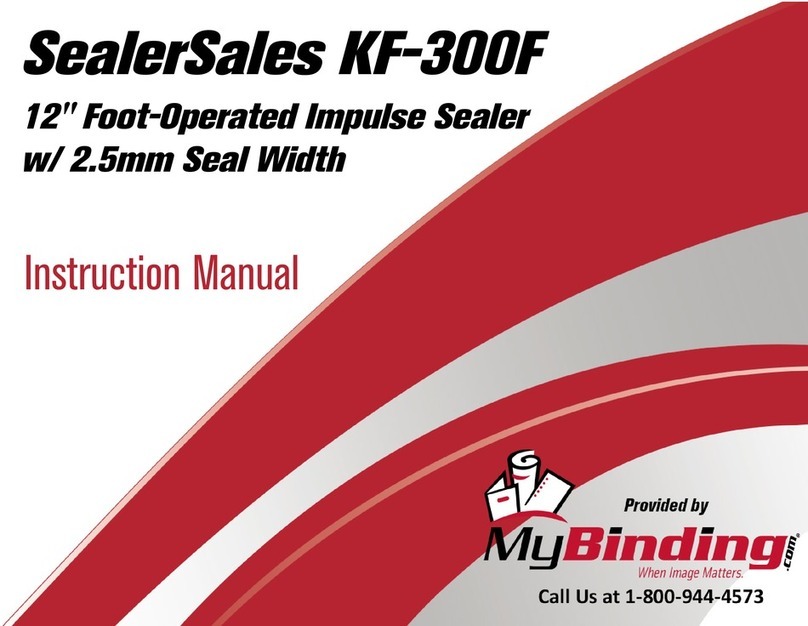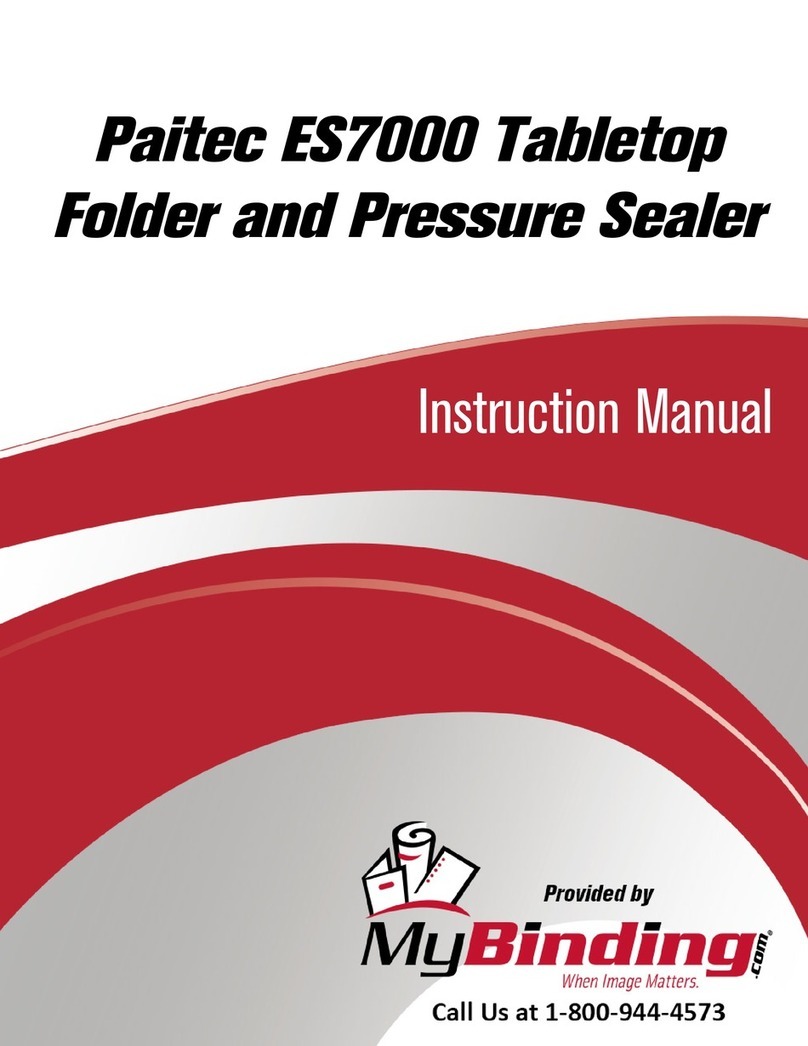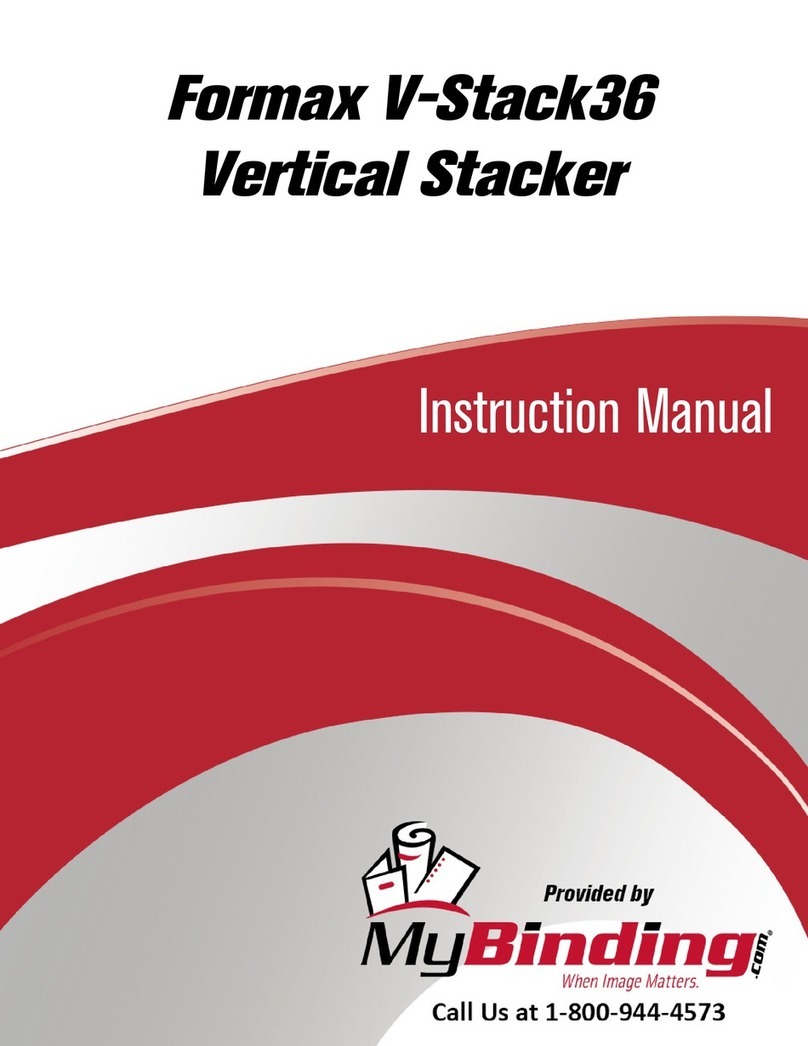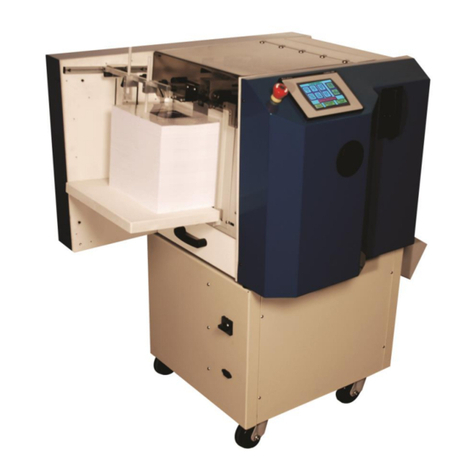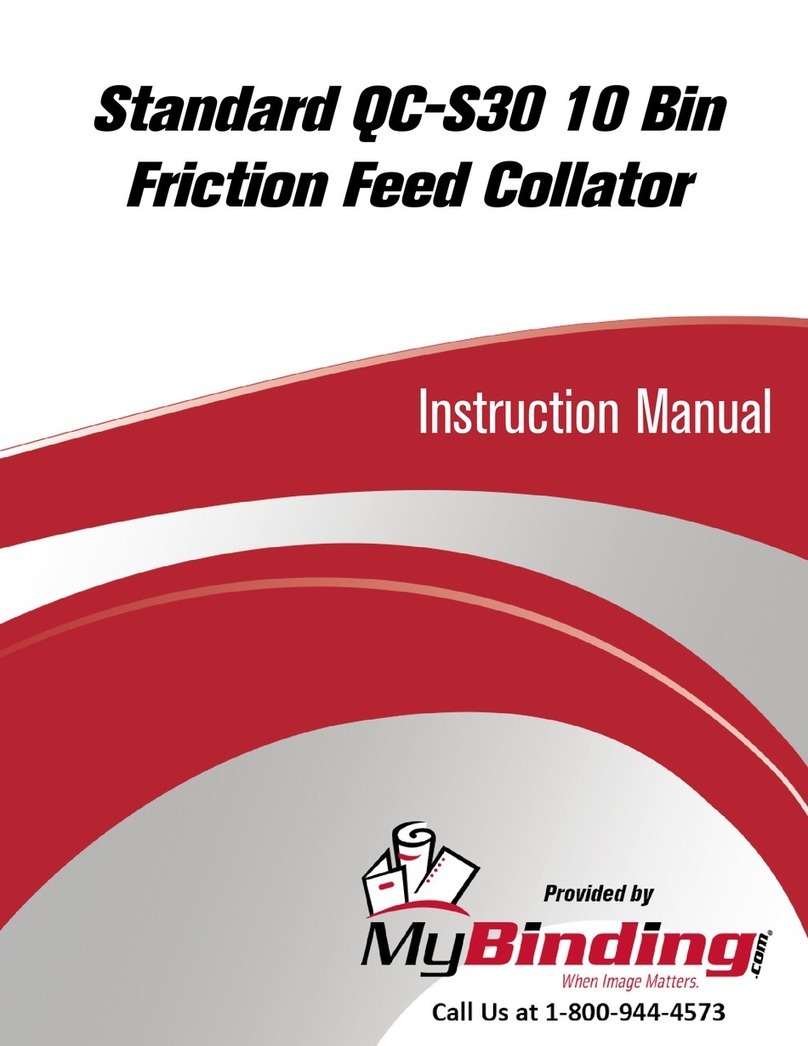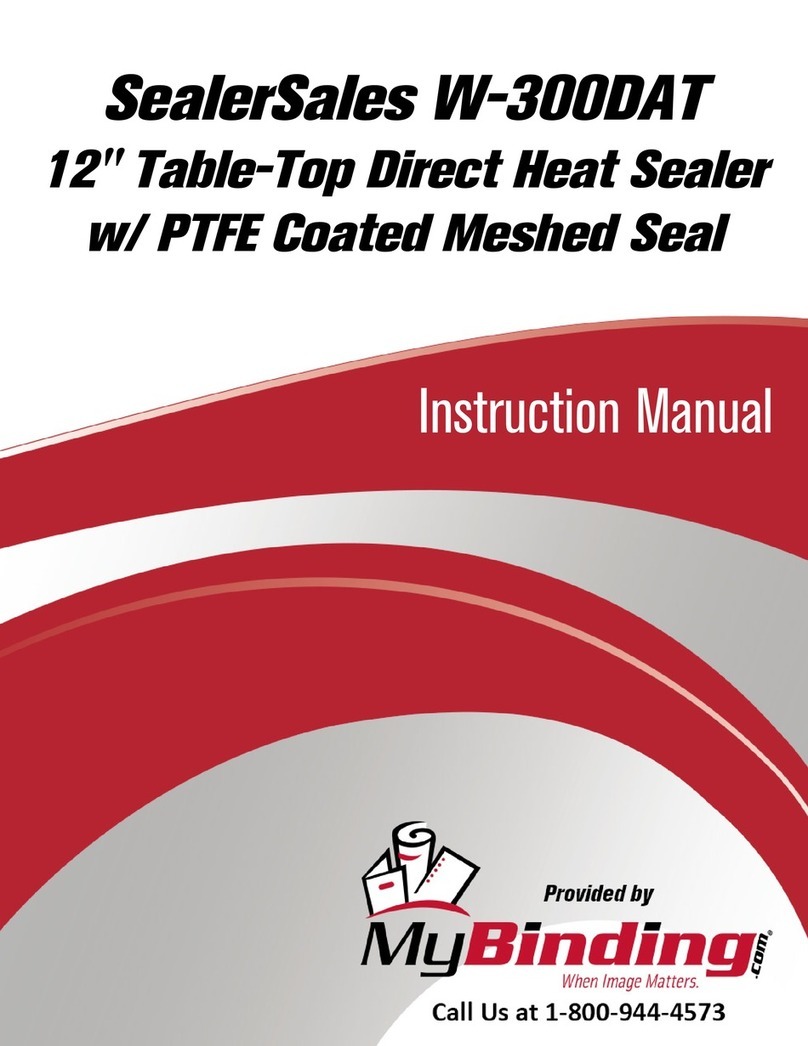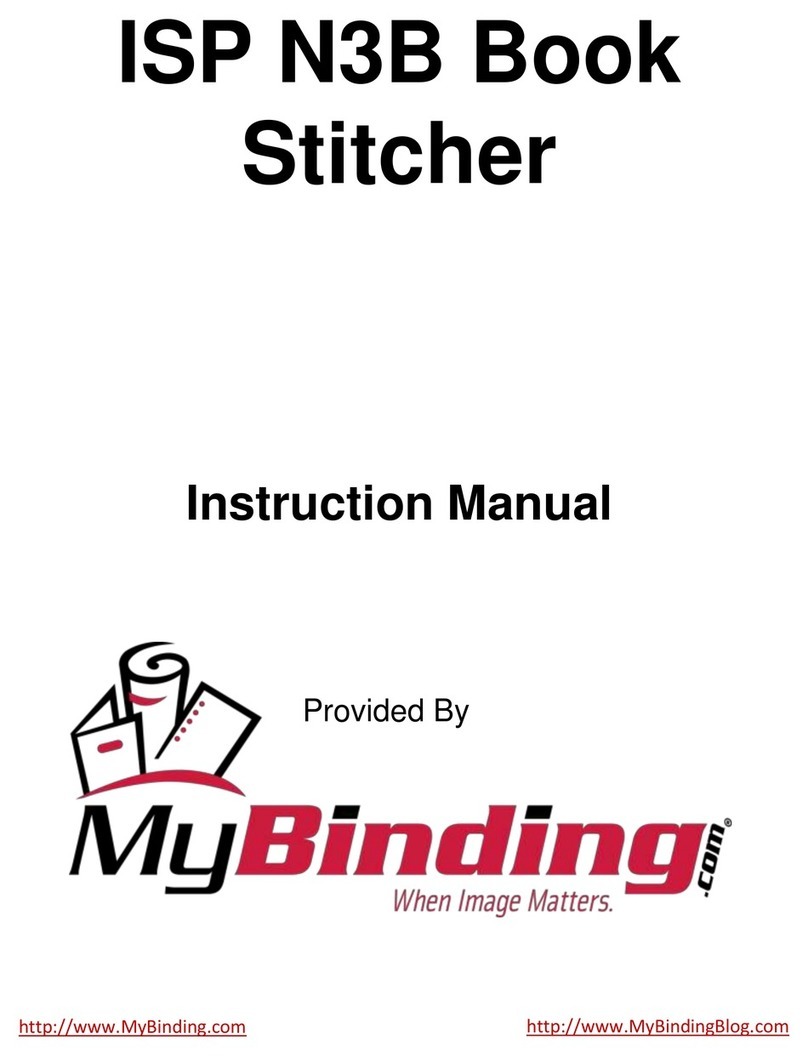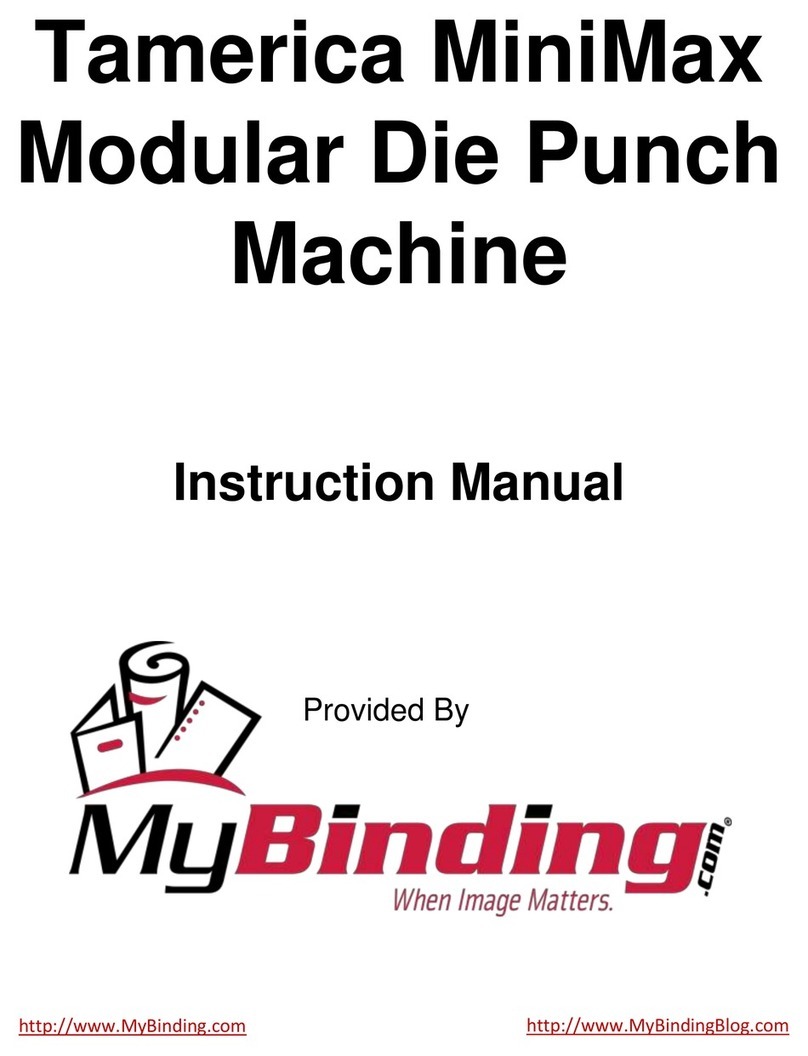
OPERATING INSTRUCTIONS
Before operating, check the heating element, teflon cover,
teflon adhesive and sealing pad (silicone rubber).
AUTOMATIC OPERATION
TIPS FOR SUCCESSFUL SEALING
1. Adjust the Sealing Time (Heating Time) according to the
thickness of the material. (Always start with a low setting
and increase gradually).
2. Adjust the Congealing Time (Pressing Time or Cooling
Time) according to the thickness of the material.
Congealing Time allows the seal a chance to set and
cool.
3. Adjust the Recycle Time according to the speed and
frequency of the sealing cycle. Recycle Time is based on
the working speed of the operator.
4. Insert the material to be sealed and allow the sealer to
operate in AUTO mode.
1. Set the Power Switch to ON position.
2. Set the Selector Switch to MAN position for MANUAL
OPERATION, or AUTO position for AUTOMATIC
OPERATION.
MANUAL OPERATION
1. Adjust the Sealing Time (Heating Time) according to the
thickness of the material.
2. Adjust the Congealing Time (Pressing Time or Cooling
Time) according to the thickness of the material.
3. Insert the material to be sealed and activate the upper jaw
of the sealer by pressing down on the Foot Switch.
(Recycle Time must be turned off.)
If the seal is broken or damaged, decrease the Sealing
Time
If the seal is not fully sealed, increase the Sealing Time
If the sealing material sticks to the sealing pad, decrease
the Congealing Time
If the width of the seal is not perfect or does not match the
size of the element, increase the Congealing Time.
Always keep the sealer clean and remove any residue
found on the platform and teflon cover. Silicon spray may
be used.
When replacing the heating element, always check the
condition of the bottom teflon adhesive. A worn teflon
adhesive will cause damage to the element.
Occasionally check the condition of the silicon rubber for
wear or burn as a damaged silicon rubber will affect the
quality of the seal.
Be sure to unplug the power cord before replacing
any parts.
CONNECTION DIAGRAM
